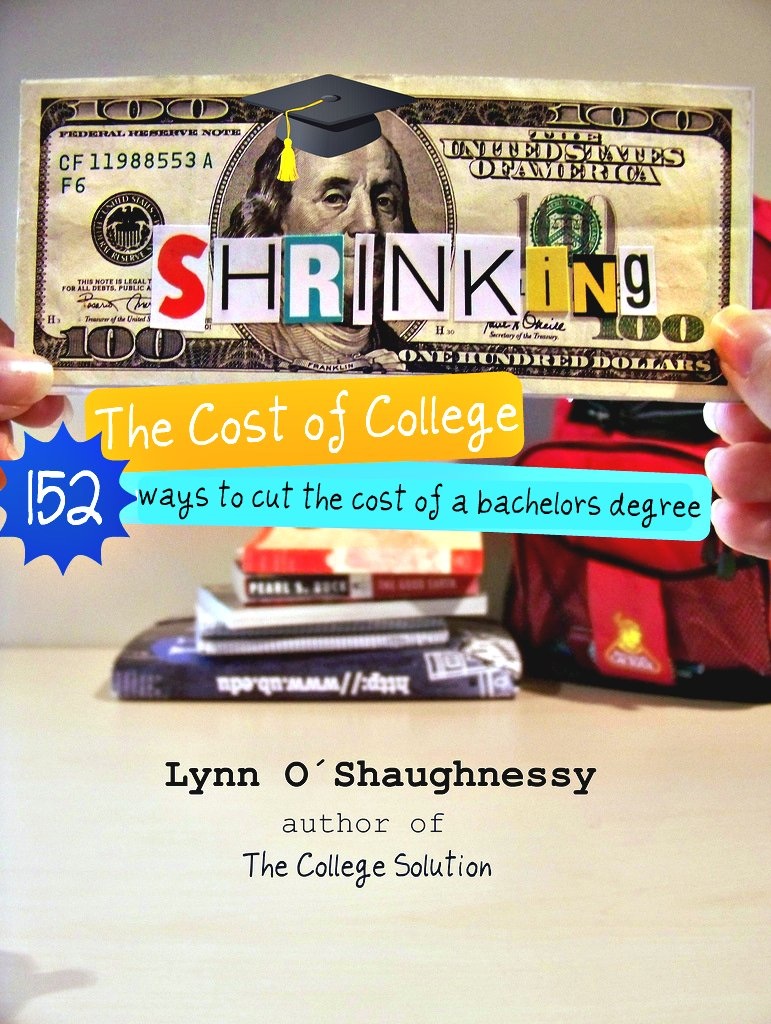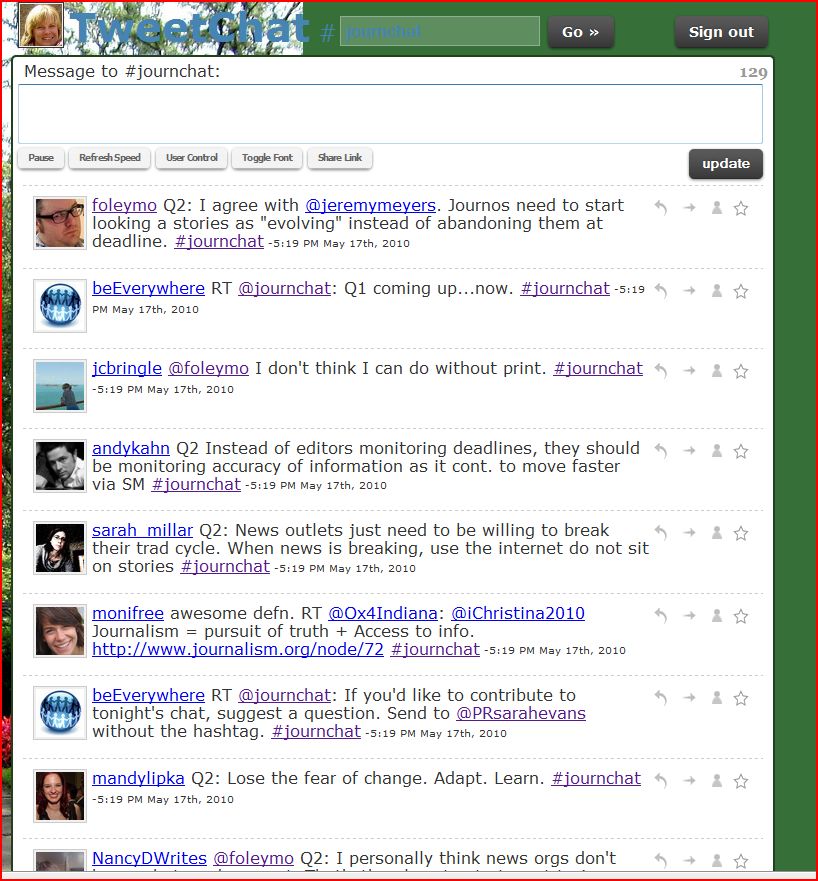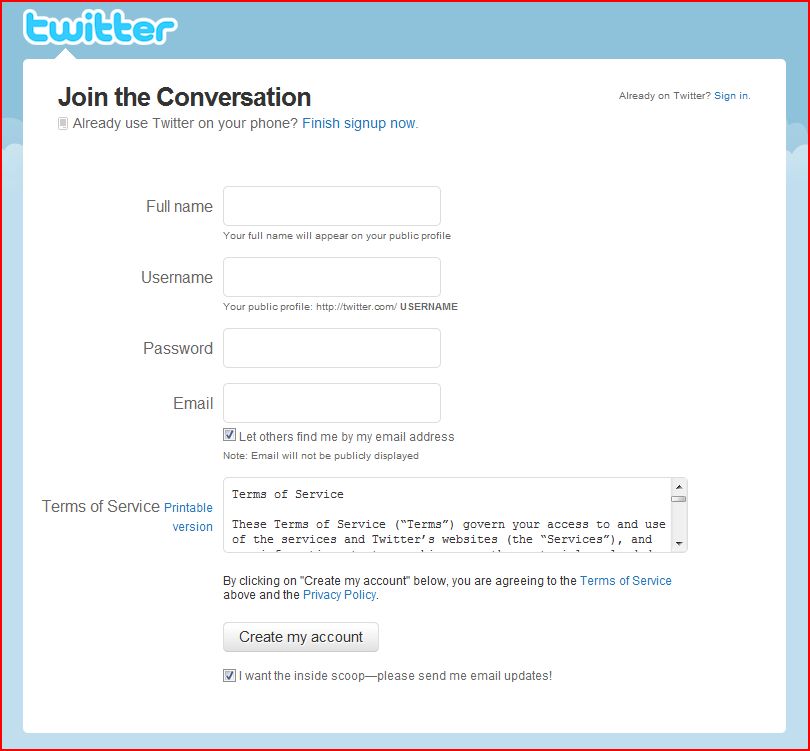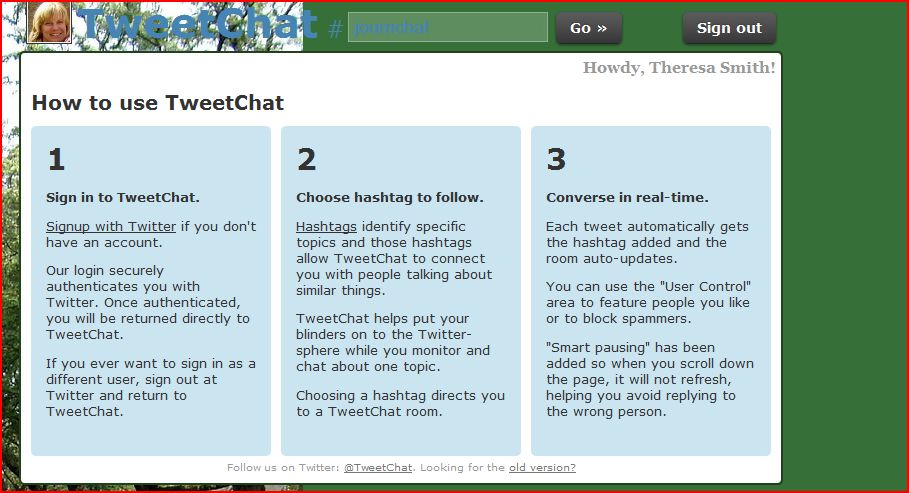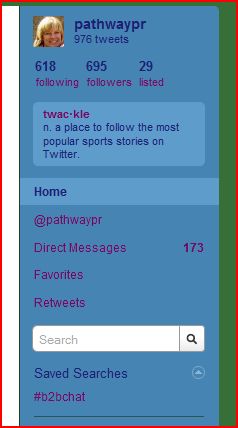2010 College Graduates: How to Land your First Job via CollegeChat
 While the job market for the 2.4 million college graduates of the class of 2010 remains torturous, there are a number of strategies graduates can utilize to increase their chances of landing their first job according to Kathryn Marion, a columnist covering the college-to-career transition and author of “Grads: Take Charge of your First Year after College”. During the June 29, 2010 edition of #CollegeChat via Twitter, Marion (http://twitter.com/tips4grads ) and other college professionals discussed tips for graduates to help secure their first job.
While the job market for the 2.4 million college graduates of the class of 2010 remains torturous, there are a number of strategies graduates can utilize to increase their chances of landing their first job according to Kathryn Marion, a columnist covering the college-to-career transition and author of “Grads: Take Charge of your First Year after College”. During the June 29, 2010 edition of #CollegeChat via Twitter, Marion (http://twitter.com/tips4grads ) and other college professionals discussed tips for graduates to help secure their first job.
“The first thing any job seeker should do to begin their job hunt is to know thy self,” said Marion. “When thinking about where you want to go in your career, start at the end, the long term. Work backward and figure out what will get you there. Part of knowing thy self is to truly understand what your values and priorities are.”
Marion recommends the following tips for college graduates:
- Don’t limit your job search. Cast a wide net and use a number of resources including alumni networks, your alma mater’s career services center, on-campus networks, online job boards, and professors. Megan Wilson, (http://twitter.com/megs0124 ) an Admission counselor at Western Carolina University added, “Students should also make use of their college Career Services office. They can help with leads or even resume and interview tips.”
- Make sure your online reputation is fiercely protected. One of the first things potential employers will do when you apply for a job is to search for more information about you online. Search your name on Google and see what comes up. Clean up your Facebook posts and photos and register your name (as well as different variations and misspellings of it) as domains. Consider setting up a simple website for free where you can create a main hub of information about yourself. A good resource to use for protecting your online reputation online and for improving important career skills is http://betterthanaresume.com/ .
- Improve your writing and speaking skills. In order to improve your writing skills, graduates should start their own blog. Katie Corcoran ( http://twitter.com/JoblessGrad2010 ), a Boston area resident and a May 2010 graduate of the University of Colorado at Boulder, has recently opened her own blog at http://thejoblessgrad.wordpress.com
“I really started the blog to share the frustrations that all of us graduates face when beginning the grueling search for not only the “perfect” job but just a job in general,” said Corcoran. “I have toyed with the idea of simply attempting to get a waitressing job just to hold me over financially until a job in the real world comes along. This process is a complete and utter emotional roller coaster. The point of the blog is not for employers to sympathize with me or offer me a job, but its purpose is to relay elements of my story, and eventually others’ stories, to let grads know we are all in the same boat here.”
- Network effectively and play often. In order to network effectively, graduates need to join groups which align with your field of work or passions and give as much as possible. Graduates need to have professional profiles on LinkedIn, Facebook and Twitter. Graduates should also invest in some business cards with your personal contact information and links to your professional domain. Marion recommends graduates use http://www.meetup.com to find local groups of people who share your passions and career interests. Another good place for networking, according to Sharon McLaughlin, (http://twitter.com/shashmc ) founder of McLaughlin Education Consulting, “is your local Chamber of Commerce. You can attend events without joining the group.”
- Dress for success. Invest in your professional wardrobe. According to Marion, it is more important now than ever to invest in a professional wardrobe in order to be taken seriously in the job market. Marion recommends job seekers read the book, “Inspired Style!” http://dld.bz/jdC9 . Fuji Fulguras, (http://twitter.com/campusbound ) a college counselor with Campus Bound, added, “Why is it important to invest in a professional wardrobe? You do not get a second chance to make a good first impression.”
- Build a personal board of directors. Mentors can be temporary or longer-term; they can help with one task, such as reviewing your resume, or they can be a sounding board for your ideas and concerns. Don’t limit yourself to just one mentor, but create a valuable support group that will help you through all the phases of your job search and career development.
- Consider an internship. Internships are not just for undergraduate students anymore “Don’t wait for a listing to pop up somewhere. Check the employers directly that you are interested in working for,” said McLaughlin.
“The more internships a student does can help define things the student does not want to do as well as would like to do professionally,” said Fulguras.
Hopefully, the graduate already has an internship under his or her belt before graduation. According to Akil Bello, (http://twitter.com/akilbello) the vice president of Educational Development for Bell Curves, “College students should do internships every summer.”
- Write down your goals. According to Marion, studies have shown that those people who take the time to think about what they want to accomplish in their lives, write them down, and put that list in a visible place so it’s always foremost in their mind, are the ones who are exponentially more likely to reach their desired goals.
- Remember that first jobs don’t dictate your entire career path. After you get your first job, remember to continue to network, to interview people for information about what they do, job shadow, and discover a way to align your paid work with what excites you.
Kathryn Marion is the award-winning author of the career and life skills book, “GRADS: TAKE CHARGE of Your First Year After College!”, and a columnist on Examiner.com covering the college-to-career transition and life after college in general. She coaches college students and young professionals on career planning, job search, and life skill concerns, and helps people in all walks and stages of life get published. Kathryn is also the editor of the book series, “The Smartest Thing I ever Did…” The print edition of GRADS: TAKE CHARGE of Your First Year After College! Is available through major online retailers and discounters; the e-book edition is available through www.QwikSmarts.com.
About #CollegeChat
#CollegeChat is a live conversation intended for teens, college students, parents, and higher education experts on Twitter. Questions for each #CollegeChat edition should be sent to Theresa Smith, the moderator of #CollegeChat either via http://Twitter.com/collegechat or by entering questions online at the CollegeChat Facebook page at http://ht.ly/1XIqV. CollegeChat can also be found on Twitter at http://Twitter.com/collegechat.
How to Participate in a Twitter Chat
If you are new to Twitter, you might not have participated in a Twitter Chat but you have probably come across a chat taking place. Twitter chats are scheduled conversations between Twitter users about whatever topic that interests them and are kept on track with a #hashtag, a topic with a hash symbol (“#”) at the start to identify it. One of my favorite Twitter chats to participate in is #journchat. It occurs on Monday evenings and is a weekly conversation between journalists, bloggers and public relations folks that was started by Sarah Evans.
Participating in a Twitter chat is a great way to learn from and connect with other individuals who might also share your passion for a specific subject area. According to the Twitter Chat Schedule , maintained by Robert Swanwick, there are already over 132 chats on Twitter and they cover almost every subject area imaginable including blogging, design, small business advice, and gardening. On June 1, 2010 at 6 PM Pacific #CollegeChat will make its debut on Twitter and will be moderated by me through my @collegechat Twitter account. #CollegeChat will start out as a monthly conversation intended for teens, college students, parents, and higher education experts on Twitter.
Getting Started
In order to participate in a Twitter chat, attendees will need to have a Twitter account. To sign up for a Twitter account, go to http:// twitter.com. Once you have your Twitter account, you are ready to go.
There are a number of formats to use to follow a Twitter chat but the easiest way I have found to follow the chat is to use TweetChat (http://tweetchat.com). Assuming you will be joining me on #CollegeChat, simply log in to TweetChat with your Twitter information (email or username followed by password) and then enter in CollegeChat without the “#” and you will be placed into the chat room with only those participating in #CollegeChat.
You can also participate in the chat from the main Twitter screen. Just enter the #hashtag for the chat with the “#” sign into the ‘search” box and you will be able to see everyone who is participating. If you want to join in, you will need to remember to add the #hashtag after every entry. You don’t need to do this step if you use TweetChat.
I hope you can join me on June 1, 2010 at 6 PM Pacific for the first #CollegeChat. Our first guest will be Amazon bestselling author and higher education journalist Lynn O’Shaughnessy who will share tips from her new book Shrinking the Cost of College: 152 Ways to Cut the Price of a Bachelor’s Degree
To be Fair, HRBlock responded after 16 hours
I hate doing my taxes. Every April I pledge to NEVER again do them on my own and every March I am again slogging through all my paper work and once again doing my own taxes. For years I have been using TaxCut now known as H&R Block At Home. On Tuesday of this week I was finally wrapping up and ran into a problem. The return wouldn’t print.
So, since being so successful just two days before with @BestBuy on Twitter, I tweeted @HRBlock.
No response.
I was surprised that just two days before the deadline all I heard from @HRBlock was dead silence and especially after being so happy with Best Buy.
Sixteen hours after my first tweet to HRBlock I tweeted:
I not only heard back from HRBlockAnswers I also heard back again from my friends at Best Buy.
By the time HRBlockAnswers contacted me, I had already finished my taxes and worked around the printer issue. I was pleased they finally responded and that they apologized. As a bonus, I also found out that I was getting $25 back from Best Buy since my washing machine has an extended warranty plan. And more than likely, even after swearing off preparing my own taxes next year, I’ll probably be purchasing another tax preparation software program come January 2011. But, I will be doing my homework on which tax preparation software program delivers the best customer support via Twitter.
Best Buy Responds In 5 Minutes
This morning the tub door seal on my Whirlpool Duet popped off after a wire popped off underneath. My husband quickly got to work to see if he could fix it and I quickly turned to Google after scanning my Best Buy service plan. Two years before I had purchased the washer online along with the service plan but discovered the link to the receipt no longer worked.
So, I turned to Twitter.
Within 5 minutes I heard back.
After a few more tweets I was on the phone with Jason and a fix to my problem was in the works. Tomorrow the technicians arrive and hopefully everything will go as smoothly as today. But for me, what was important was that Best Buy was listening (on a Sunday morning!) and willing to engage me online to ensure I was pleased with their customer service. Is your Brand listening to your customers?
24% of US Small Businesses Now Engaged in Social Media Survey Says
American small businesses are pushing the limits on new ways to improve efficiency in the prolonged downturn, including a steady increase in social media adoption according to results of a study from the Small Business Success Index™ (SBSI) sponsored by Network Solutions and the Center for Excellence in Service at the University of Maryland’s Smith School of Business . The SBSI reports social media adoption by small businesses has doubled from 12 percent to 24 percent in the last year.
The SBSI found that nearly one out of five small business owners are actively using social media in their business. Small businesses are increasingly investing in social media applications, including blogs, Facebook® and LinkedIn® profiles. The biggest expectation small business owners have from social media is expanding external marketing and engagement, including identifying and attracting new customers, building brand awareness and staying engaged with customers. Sixty-one percent of the respondents indicated that they use social media to identify and attract new customers.

![]() photo credit: harrietbarber
photo credit: harrietbarber
“Social media levels the playing field for small businesses by helping them deliver customer service,” says Janet Wagner, director of the Center for Excellence in Service at the University of Maryland’s Robert H. Smith School of Business. “Time spent on Twitter®, Facebook® and blogs is an investment in making it easier for small businesses to compete.”
Small business owners use social media to attract new customers:
- 75% surveyed have a company page on a social networking site
- 61% use social media for identifying and attracting new customers
- 57% have built a network through a site like LinkedIn
- 45% expect social media to be profitable in the next twelve months
Small business owners still have concerns with social media:
- 50% of small business social media users say it takes more time than expected
- 17% express that social media gives people a chance to criticize their business on the Internet
- Only 6% feel that social media use has hurt the image of the business more than helped it
To download a copy of the Small Business Success Index and also find out how your business scores on the six key dimensions of small business success, visit www.growsmartbusiness.com.
Has your business adopted social media? What is your company doing? What have been the results so far?
What are the Best Tech Products of 2010?

![]() photo credit: marcopako
photo credit: marcopako
Michael Arrington, founder and co-editor of TechCrunch and the world’s fourth-most-powerful blogger, according to Technorati, has released “2010: My fifth Annual List of the Tech Products I Love and Use Every Day.”
According to Arrington:
This is a simple list of the tech products that are an integral part of my day – work or play. Some have withstood the test of time and I just can’t live without. Others are newcomers that have captured my imagination.
I use most of them every day, or nearly every day, and I would not be as productive or happy without all of them. There are now 24 products on the list.
Arrington writes that TechMeme, Skype and WordPress are the only products that have been on his list for all five years. The entire list of products follows:
- Android
- Animoto
- Apple Magic Mouse
- Foursquare, Loopt, and Gowalla
- Gmail
- Hulu
- Kodak Zi8
- MOG, Pandora and Spotify
- Scribd and Docstoc
- Skitch
- TripIt
- WordPress
- Yammer
- YouTube
What tech products do you love and use everyday?
 Los Angeles, CA, May 19, 2010— Bestselling author and higher-education journalist
Los Angeles, CA, May 19, 2010— Bestselling author and higher-education journalist 